Design: Interviews / Milan
A fair to remember
We look back at some of the key projects showcased at this year’s Salone del Mobile and ask industry leaders: what comes next?
The annual Salone del Mobile is the centrepiece of Milan Design Week and the global industry’s largest and most important trade fair. It’s an event that brings together the biggest names in the sector while also providing a platform for lesser-known voices.
As well as being a launchpad for new product releases, the gathering serves as a bellwether for the evolving priorities of the design and architecture industries. It’s also a vital source of inspiration for practitioners. Here, we speak to some of the movers and shakers who showed their work this year in Milan to find out about their projects and big ideas for 2024 and beyond.
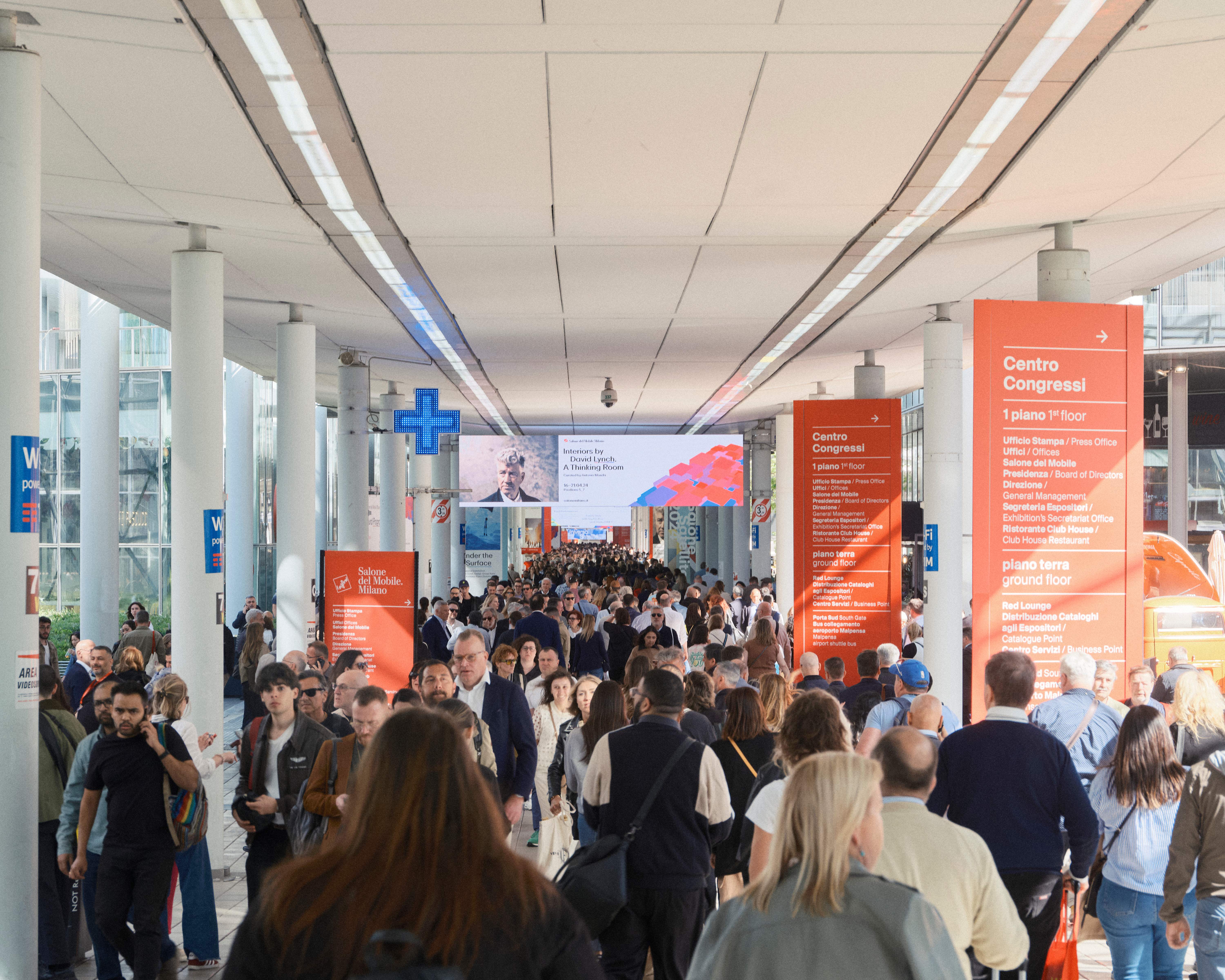
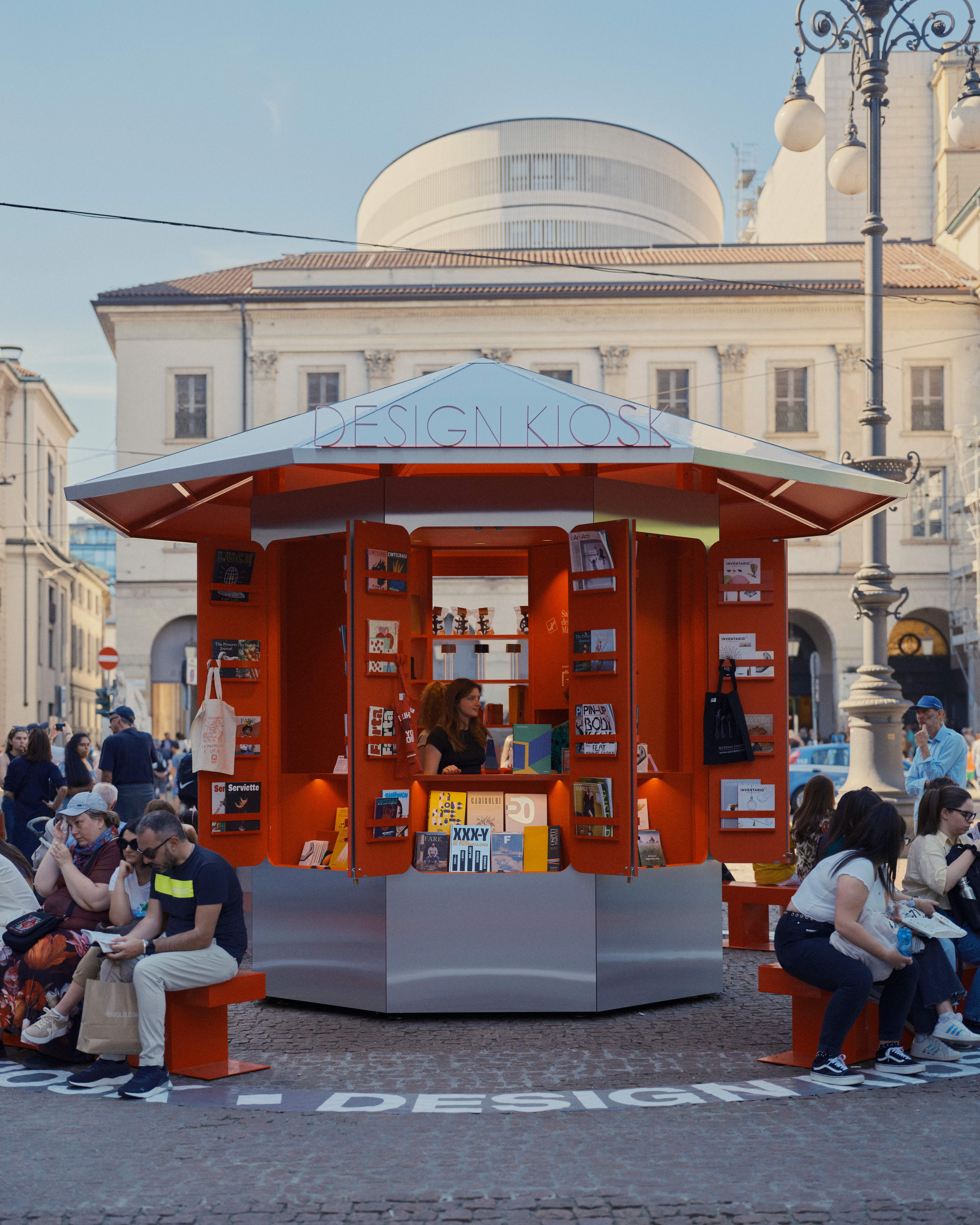

the creative director
Samuel Ross
UK
After studying graphic design and illustration – and a stint as Virgil Abloh’s design assistant – Samuel Ross founded sportswear brand A-Cold-Wall* in 2014 and design studio sr_a sr_a in 2019. Over the past 10 years, the British-Caribbean artist and designer has collaborated with industry leaders such as Nike and Apple (who he continues to work with), showcased work at galleries including White Cube in London and New York’s Friedman Benda, and been awarded an mbe for services to fashion. Here, he tells us about his designs for US bathroom brand Kohler, including an aqueduct-inspired installation in a palazzo courtyard during Milan Design Week.
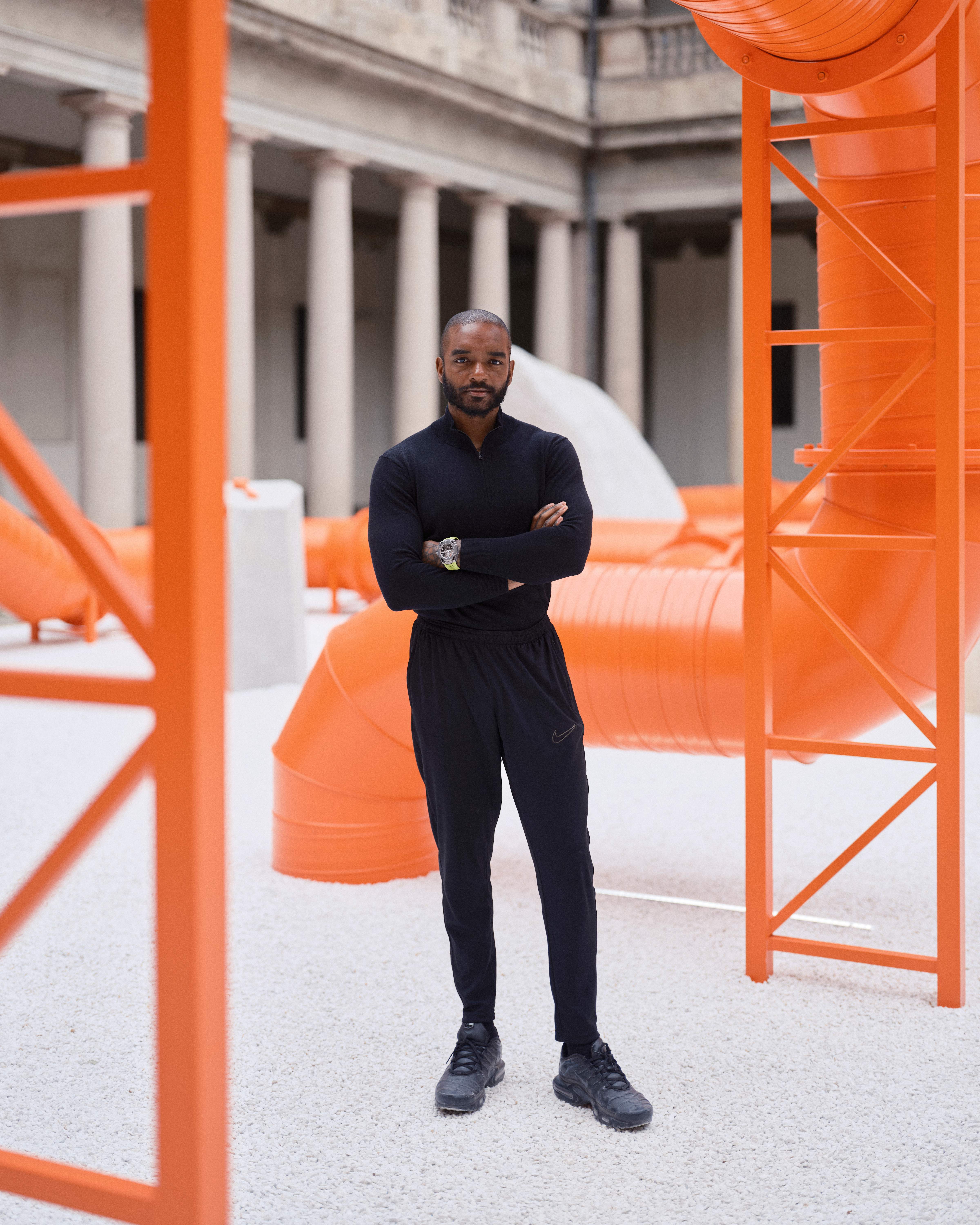
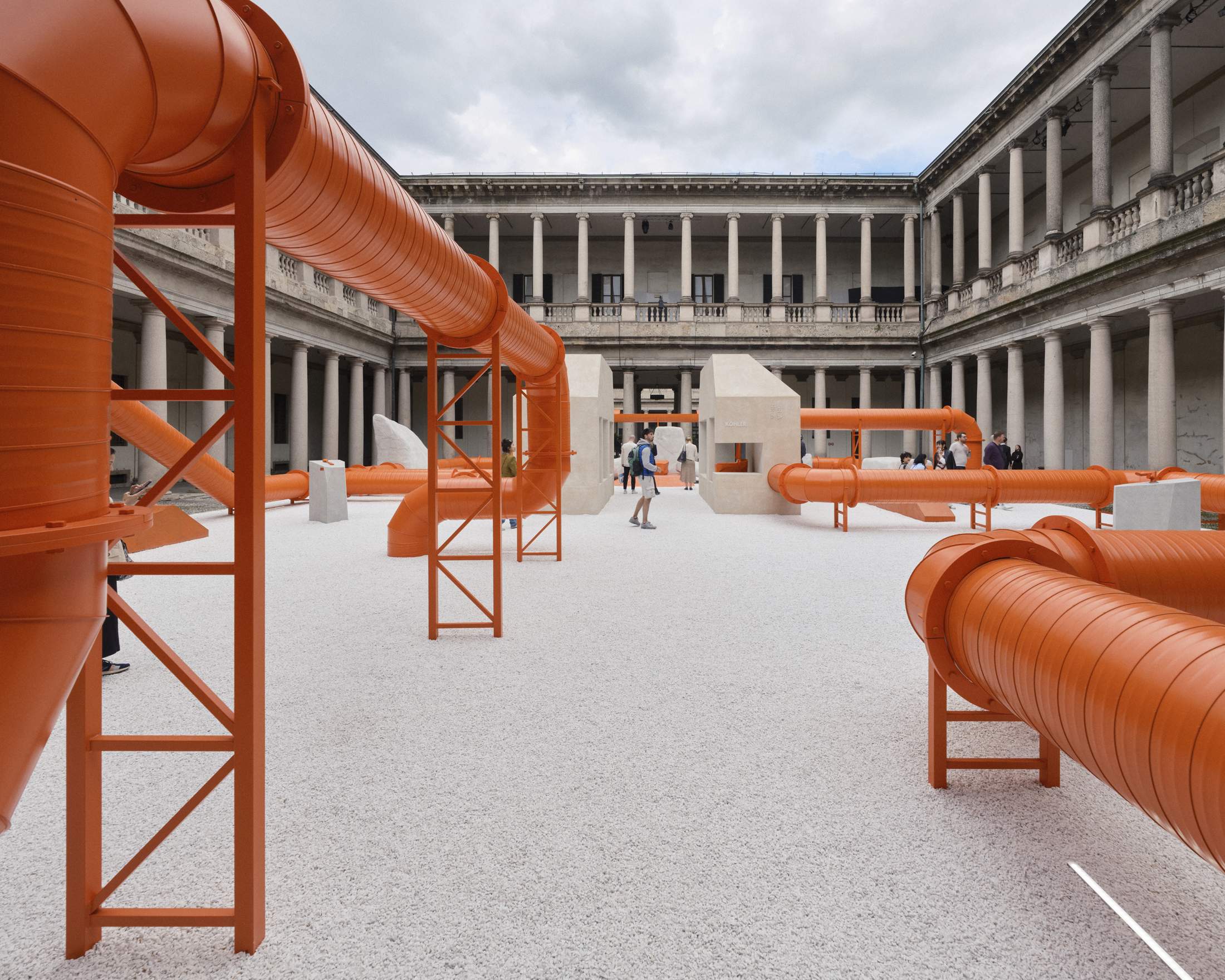
You describe yourself as an artist and designer. Is this distinction between the disciplines important?
If you have decided to dedicate yourself to the creative arts, you need to have different levers that you can pull. Some of those fall under the remit of service design and commercial work. Others are about the desire to contribute to the future index of the history of the arts. It’s like church and state: we have the arts as a complete expression of the self and design as the gift of servitude.
You have worked on everything from watches for Hublot to footwear for Nike. How did your collaboration with Kohler come about?
Our studio’s philosophy is to work with market leaders. When it comes to engineering and the movement of water, which sounds very poetic, the incumbent in North America is Kohler. There’s also something quite special about the fact that the company is now more than 150 years old and has had four generations of independent leadership. Kohler also has a certain elasticity when it comes to how it engages with creativity. This enabled us to have radical conversations around what is often seen as common design.
How did that attitude translate to your work for the brand at Milan Design Week?
I have always been fascinated by the feats of engineering that are hidden within centuries-old aqueducts in places such as Milan and Venice. Through the Kohler partnership, I wanted to explore ideas such as the movement of water and create tension between sculpture and design. That involved taking a step back before going into the design process and asking ourselves, “How do we make this a bigger story than simply designing a toilet, a sink and a faucet?”
Why is it important to have that kind of story?
Designers have an unspoken obligation to break new ground. And while the idea of service isn’t forgotten in any of the decisions that we make, a well-versed, nuanced audience is ultimately looking for a product or object that will elicit a response or evoke an emotion. My duty as an artist and a designer is to put new concepts out there, which comes with a certain level of risk. I also feel a personal obligation to work with these market leaders and try to push concepts through commercial practice. In design, you have to engage in servitude, questioning and inquiry. It’s less about good or bad than about the idea of pulling apart what we know in the hope of moving things forward into a new design moment.
the astrophysicist
Ersilia Vaudo
Italy
You might not expect to find an astrophysicist hard at work at Milan Design Week but Ersilia Vaudo bucks the trend. For this year’s event, the chief diversity officer of the European Space Agency (esa) teamed up with architect Benedetta Tagliabue to create the Lune d’acqua lamp for Italian lighting manufacturer Artemide, inspired by the moons of Jupiter and Saturn.
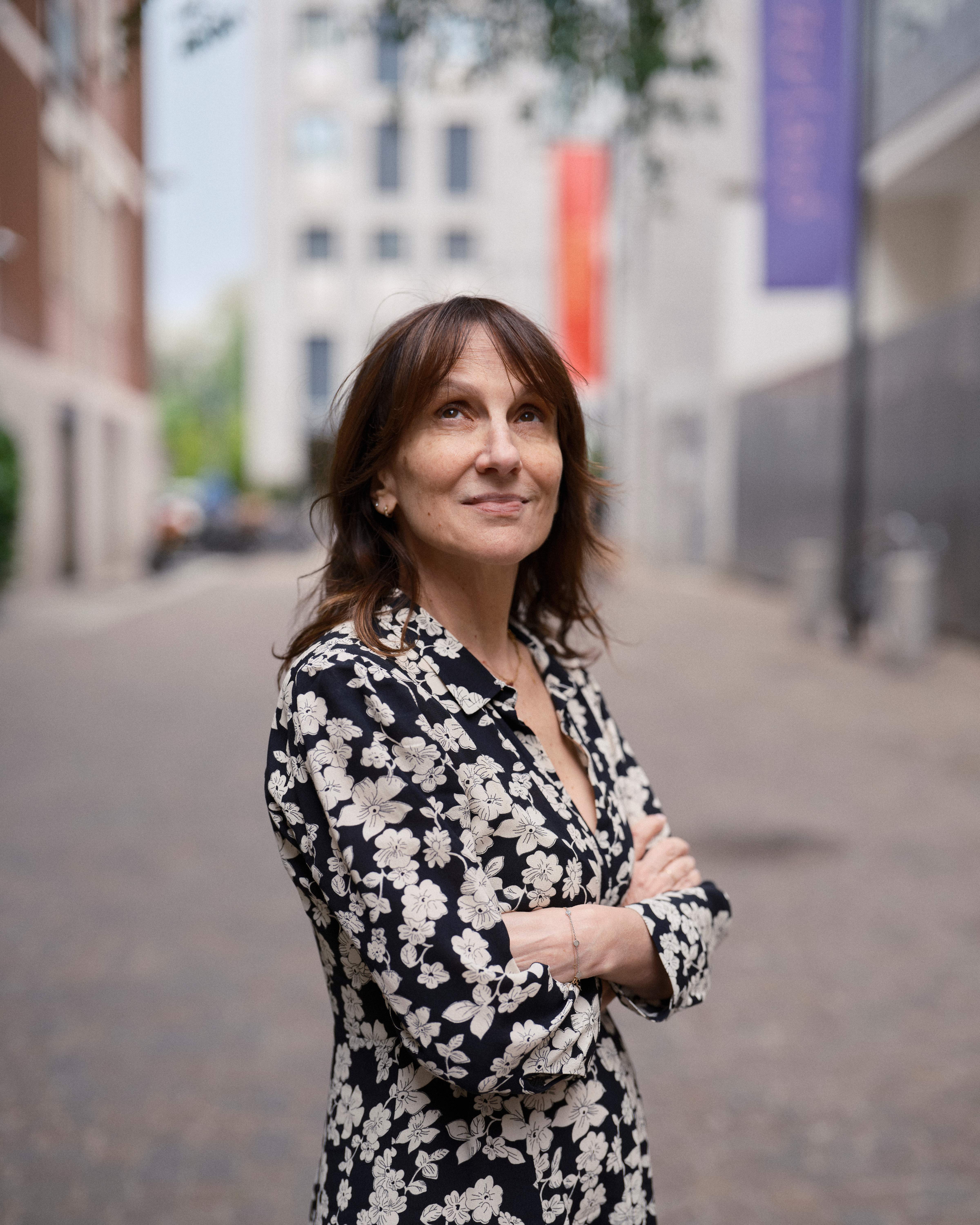

How did the lamp project come about?
My background is in space exploration. I have worked for the esa for 33 years, shuttling between Paris and the US, where I collaborate with Nasa. A few years ago, Stefano Boeri, the president of the Triennale Milano design museum, asked me to be the main curator of its 23rd international exhibition because I like to talk about science and the inspiration that it gives to people in many other fields. The theme of the exhibition was “Unknown unknowns” – the idea that we don’t know what we don’t know. The show encompassed the disciplines of architecture, art, design and science. That’s where I met architect Benedetta Tagliabue and Carlotta de Bevilacqua, the president and ceo of Artemide. The notion of creating a lamp together evolved from there.
Your lamp is called the Lune d’acqua, Italian for ‘water moons’. Can you tell us what inspired it?
Everything that orbits around a planet is called a moon. Jupiter has 91 of them and three are made from water. These moons are oceans trapped in shallow ice with a metallic core and a lot of hydrothermal activity. Significantly, they are perfect places for life to exist because they have the same sort of conditions that we had at the bottom of our oceans when life started here on our planet. Part of my job at the esa involves studies to uncover the mysteries of these moons. They are magical places where you see this beautiful process of material transformation, in which water goes from solid to liquid states. They’re round too. In space, almost everything is that shape because gravity is the greatest designer and it likes spherical perfection. That was the starting point for the design, which is defined by a central glowing sphere suspended by two rings, which allow it to spin and rotate. It’s about drawing on elements of cosmic design.
What expertise did Artemide bring to the table when it comes to turning this idea from concept into reality?
What is fantastic about the lamp is that we were able to create an effect in which the light that’s emitted appears to bend through space and time. This is thanks to Artemide’s patented fabric-like net of material that has led lights embedded in it. This sits at the centre of the sphere.
Is this project about bringing some of the principles of space exploration into our homes?
We wanted to evoke the sense of belonging to something bigger than us. But we are still human beings living in a complex world and lucky to be part of this planet. Earth is the only home that we have. We hope that this light is not just a design object but a reminder of the privilege and vulnerability of being human.
the architect
Andrea Caputo
Italy
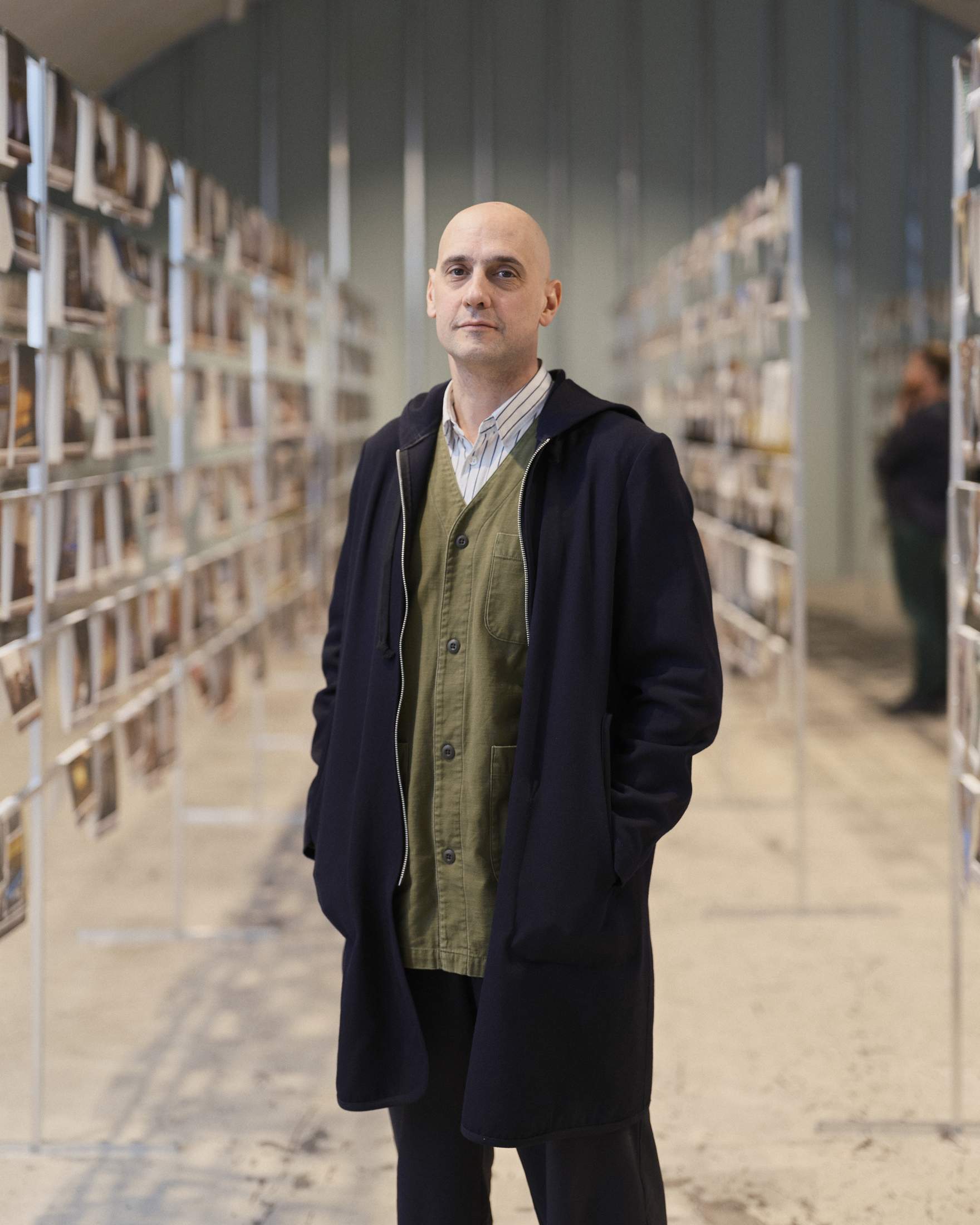
Just north of Milano Centrale station in 30 tunnels leased from the rail yard, you’ll find Dropcity: an as-yet-incomplete architecture and design centre that will ultimately house exhibition areas, libraries, workshops, machinery labs and co-working spaces. Run by architect Andrea Caputo, Dropcity put on 15 exhibitions during Milan Design Week, including a display of 3,000 photos of 20th-century architecture curated by Adam Stech and an installation by Milan’s 6:am Glassworks. “We want to work with brands but this isn’t a location rental,” says Caputo. Instead, the centre’s civic mission includes sharing ideas and finding better ways for creatives to work together.
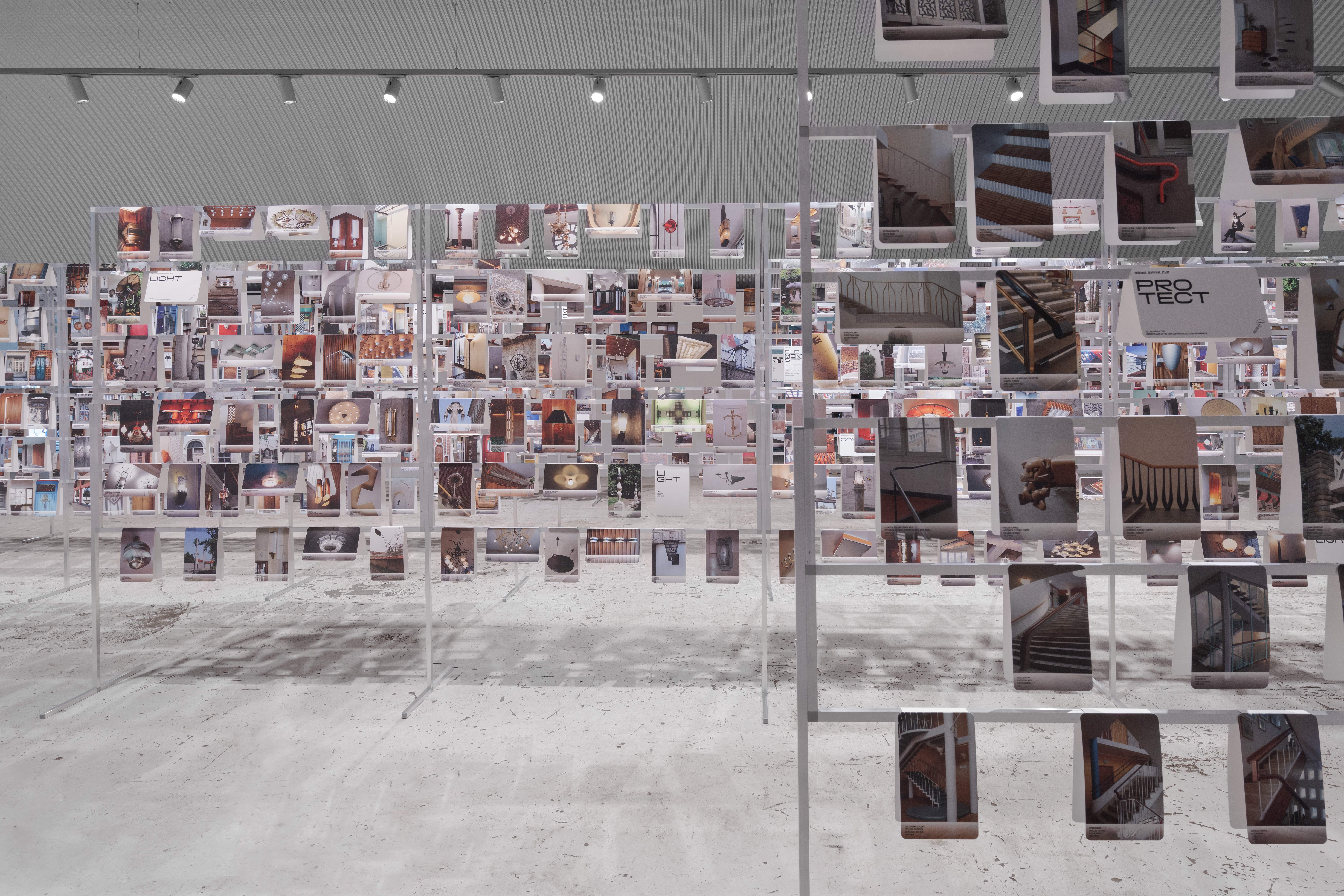
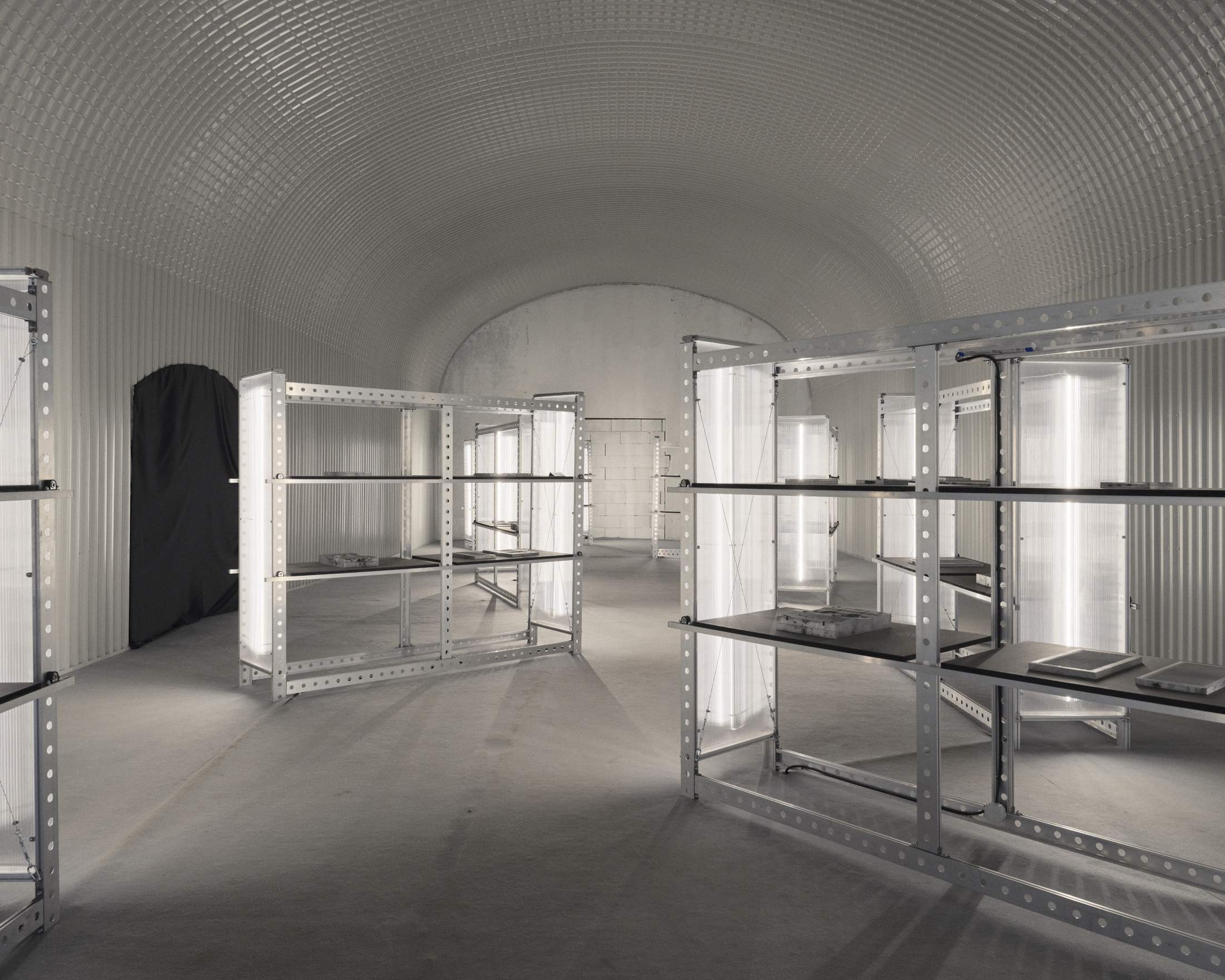
How is the transformation of the archways going?
Since January we have been in construction, renewing the tunnels and the space. That’s why we called our showcase during this year’s Milan Design Week In Progress. We were revealing the interior works as they are developing. Some of the spaces have been partially completed and others are going to be finished soon.
What’s your long-term plan?
Dropcity has both a social and a commercial programme. The latter is more about co-working, while the libraries and exhibition spaces are part of the social side. The first phase opens in October. We will have tunnels dedicated to 3D and robotic prototyping for millwork-machinery workshops, with equipment including cnc laser cutters and all kinds of manual tools. We want to create a multifaceted facility: one side will work on things that are related to automation, while another will focus on craftsmanship and materiality. On top of that, we will have an exhibition space that will initially feature Paris-based architecture studio Bruther’s first large-scale retrospective in Italy. The second phase is planned for spring 2025. We will have more laboratories, a materials library and a civic library. We hope to have completed 18 tunnels by then. We have yet to define what the final phase will be but it should be finished in 2026.
What will Dropcity do for the city? Is your aim to reach as many people as possible?
Yes, that’s exactly the point. There’s a neighbourhood scale, a city scale and an international scale. At the neighbourhood scale, we would like to work with local associations and become a library, a small civic space where people can come every day. At the city scale, we want to cater to architects, designers and students so that they can have an accessible space.
Is the plan to use a membership model?
Today, if you’re a designer or an architect and want to produce a large 3D print, you go to a company, you send the file, you pay and then you receive the object. The difference at Dropcity is that we run courses on 3D printing to teach people how to use these machines themselves. You don’t have to do the course to use the printer but you have to show that you’re able to 3D-print with this machinery. It’s about “access to tools”, a mantra from the 1960s that is highly relevant here. Dropcity will be accessible to anyone. It’s just a matter of being willing to be part of it and use the facilities.
the industrial designer
Sabine Marcelis
The Netherlands
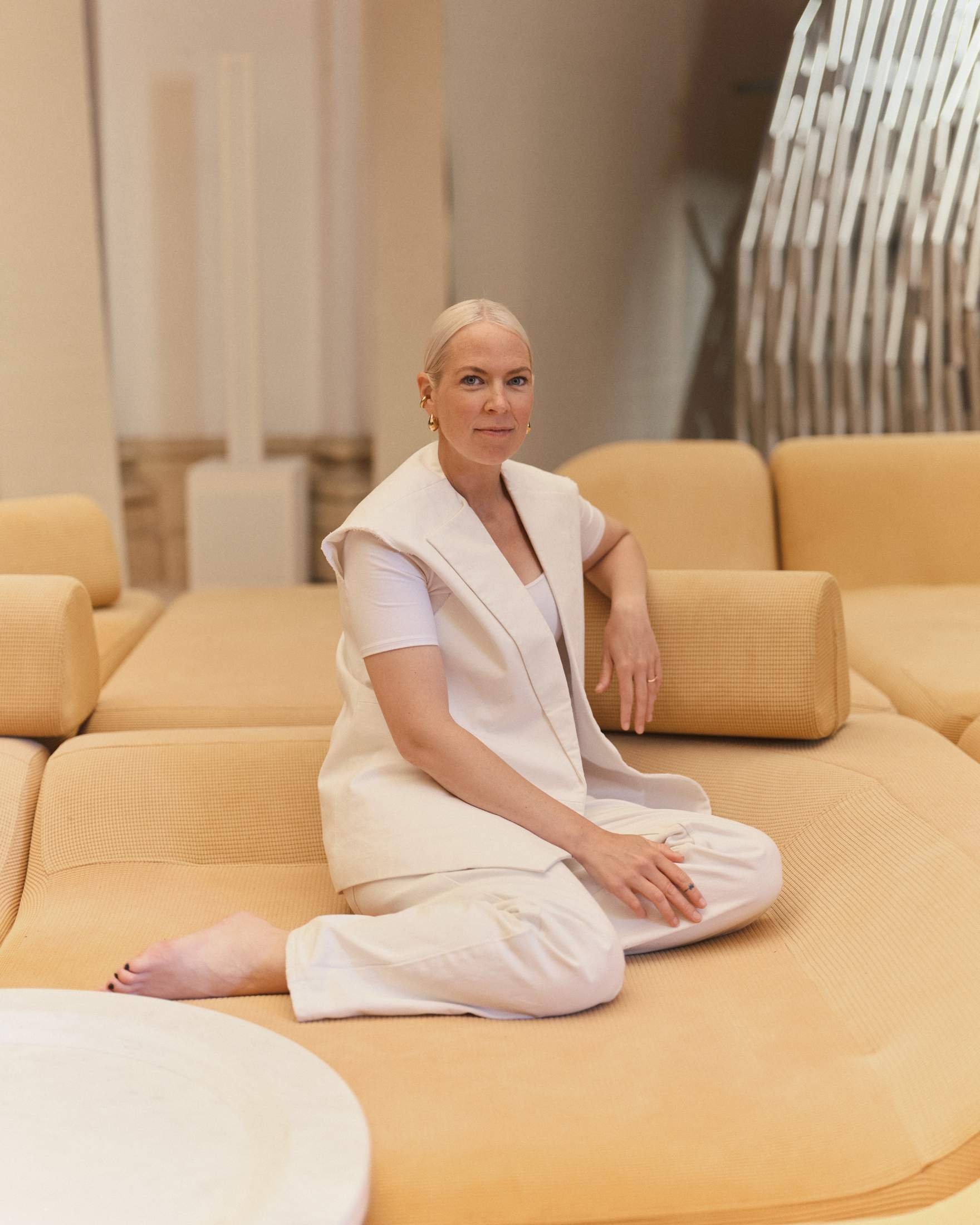
Dutch designer Sabine Marcelis works across scales and media, from civic installations in London to furniture for Danish brand Hem. Last year she was on the selection committee of Design Space Al-Ula’s first residency. The programme invited both Saudi and international creatives, such as France-based Leo Orta and Hall Haus, to make new pieces inspired by the ancient city’s architecture and landscape. With her partner, Paul Cournet, the founder of Rotterdam-based architectural practice Cloud, Marcelis co-curated an exhibition that presented the resulting works at this year’s Milan Design Week.

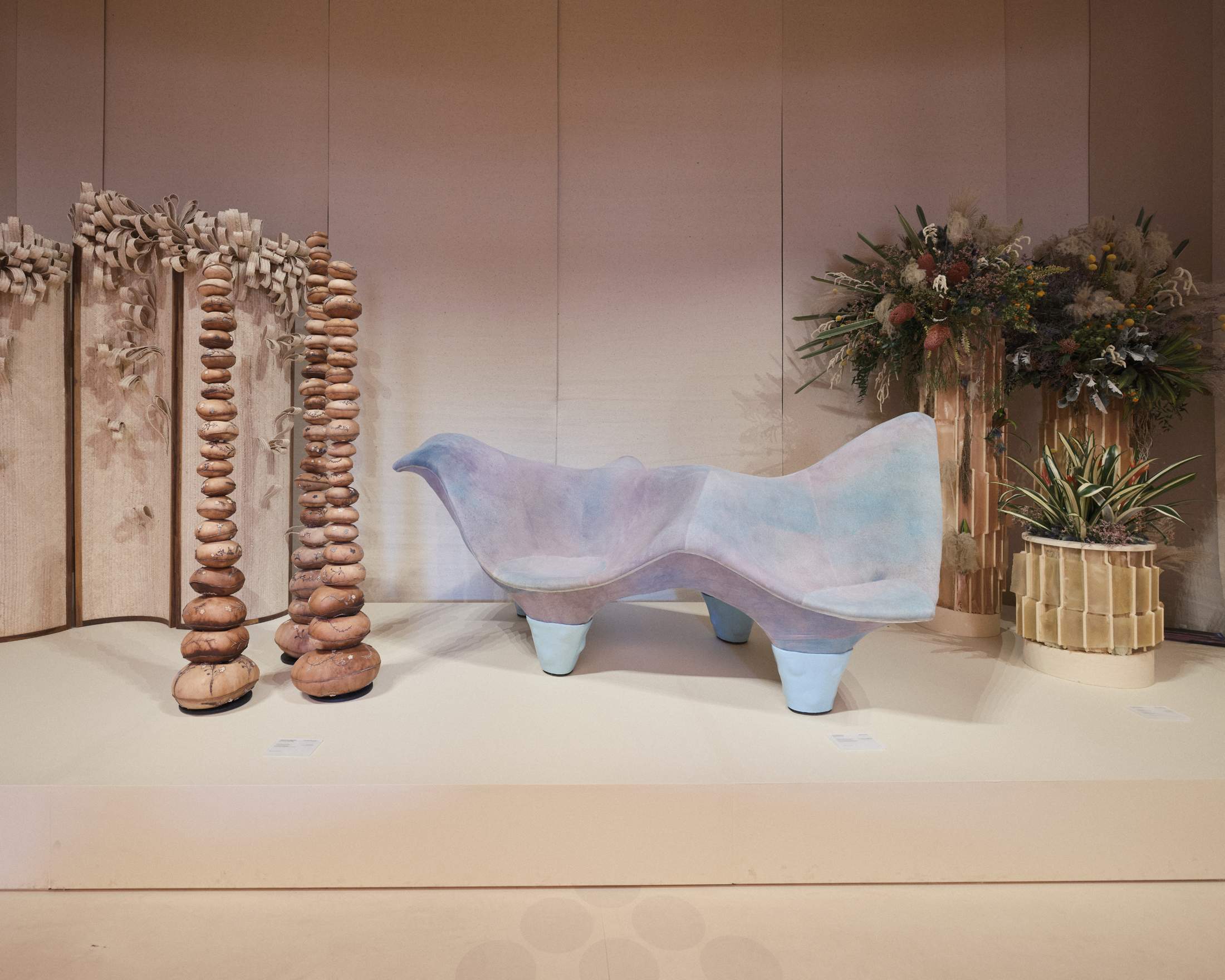
Why did you bring Al-Ula to Milan?
There are amazing rock formations at a Unesco heritage site called Hegra, near Al-Ula. We wanted to bring the essence of this landscape to Milan so we created a rock-like installation that pulls you into a sort of oasis in an old library. Inside, you’ll find the designs, with a large sofa by Hall Haus as a focal point. The concept was stargazing, inspired by the lack of light pollution in Al-Ula. We couldn’t recreate that in Milan; instead, with the team at Cloud, we made a big light box to sit above the sofa, so that you could enjoy a similar experience.
Does that cross-pollination of culture and design highlight the importance of residencies?
That’s the point of doing a residency: you create pieces that are linked to the setting. For the Al-Ula one, we selected designers who we thought would get involved in the Saudi scene. France-based artist and designer Leo Orta is an excellent example of this: he was in Saudi Arabia for a few months and became good friends with some of the country’s makers, who helped him to create furniture with earth and wax that captured the materiality of Al-Ula.
Why is it important to create place-based works?
We’re at a sad moment when everything is starting to look like everything else. If you go to a hotel in Barcelona, there’s a good chance that it’ll be furnished in the same way as another in New York. But there’s something special about being very specific to a place in terms of aesthetic and materiality. There’s plenty to be gained by everyone: designers learn a lot from the residents of a place, who, in turn, learn from the designers. The Al-Ula project is about cultivating a long-term dialogue, not just placing alien pieces in the desert.
Is a residency ultimately more about the making process than the end product?
Yes. I hope that people think carefully about how production is linked to design. I have noticed that there’s a tendency today for creatives to envision designs that are completely removed from how it will ultimately be made. It’s important to stay close to the production process and consider the materials that we use because there are so many new ones being developed. It’s exciting to be able to work with these. Past generations didn’t have access to all the new material science that we have. There should be a reason why things are designed in the way that they are. That involves a deep consideration of production and materials.
the furniture designer
Keiji Takeuchi
Japan & Italy

Born in Japan and raised in New Zealand, furniture designer Keiji Takeuchi is now based in Italy, where he runs his namesake studio from Milan. Before establishing his firm in 2015, he studied in Auckland and Paris, and worked in Tokyo for designer Naoto Fukasawa. Takeuchi has designed furniture and products for international brands including Italian furniture giant De Padova, Herman Miller in the US and Portuguese cork specialists Amorim.
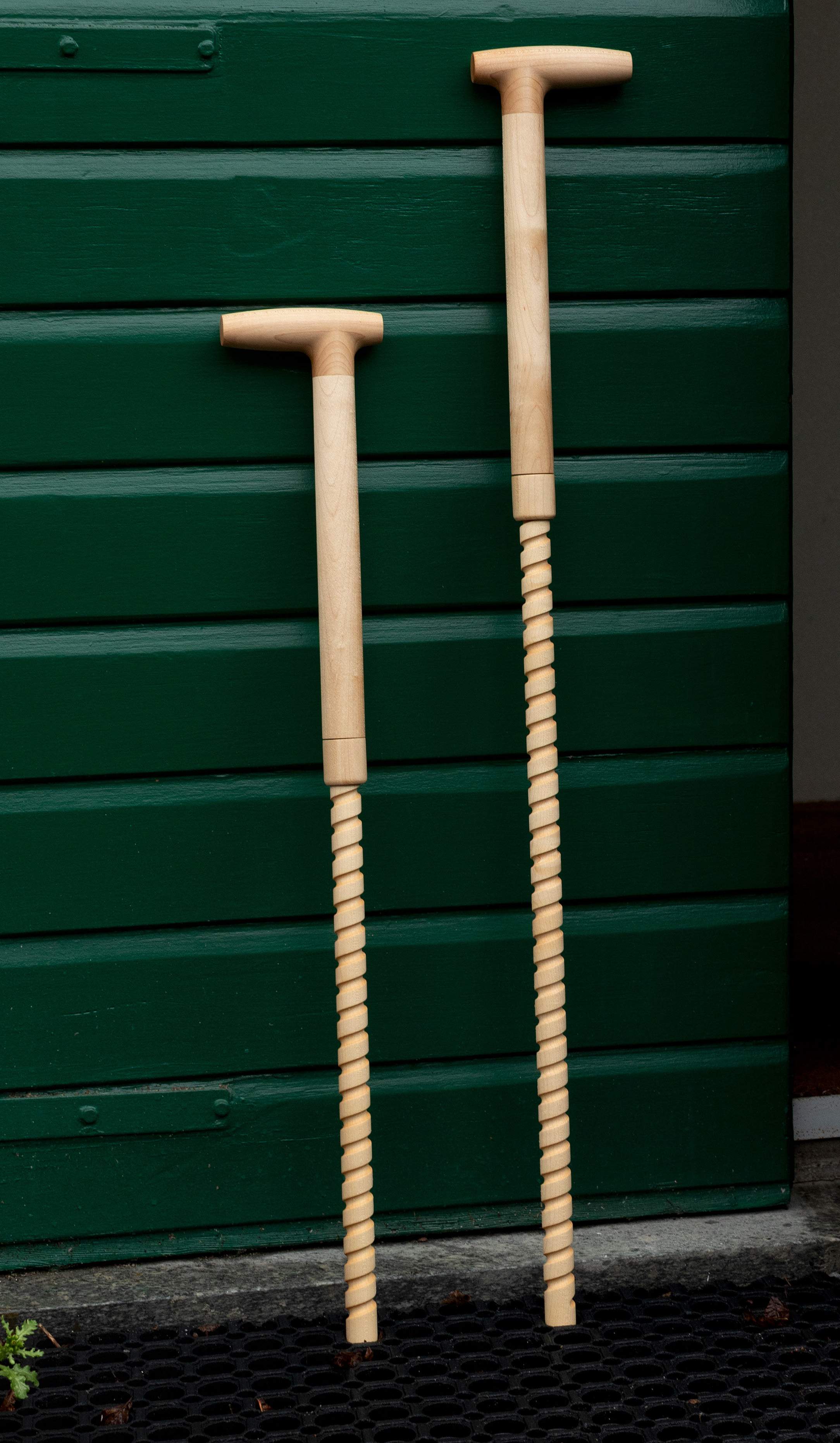
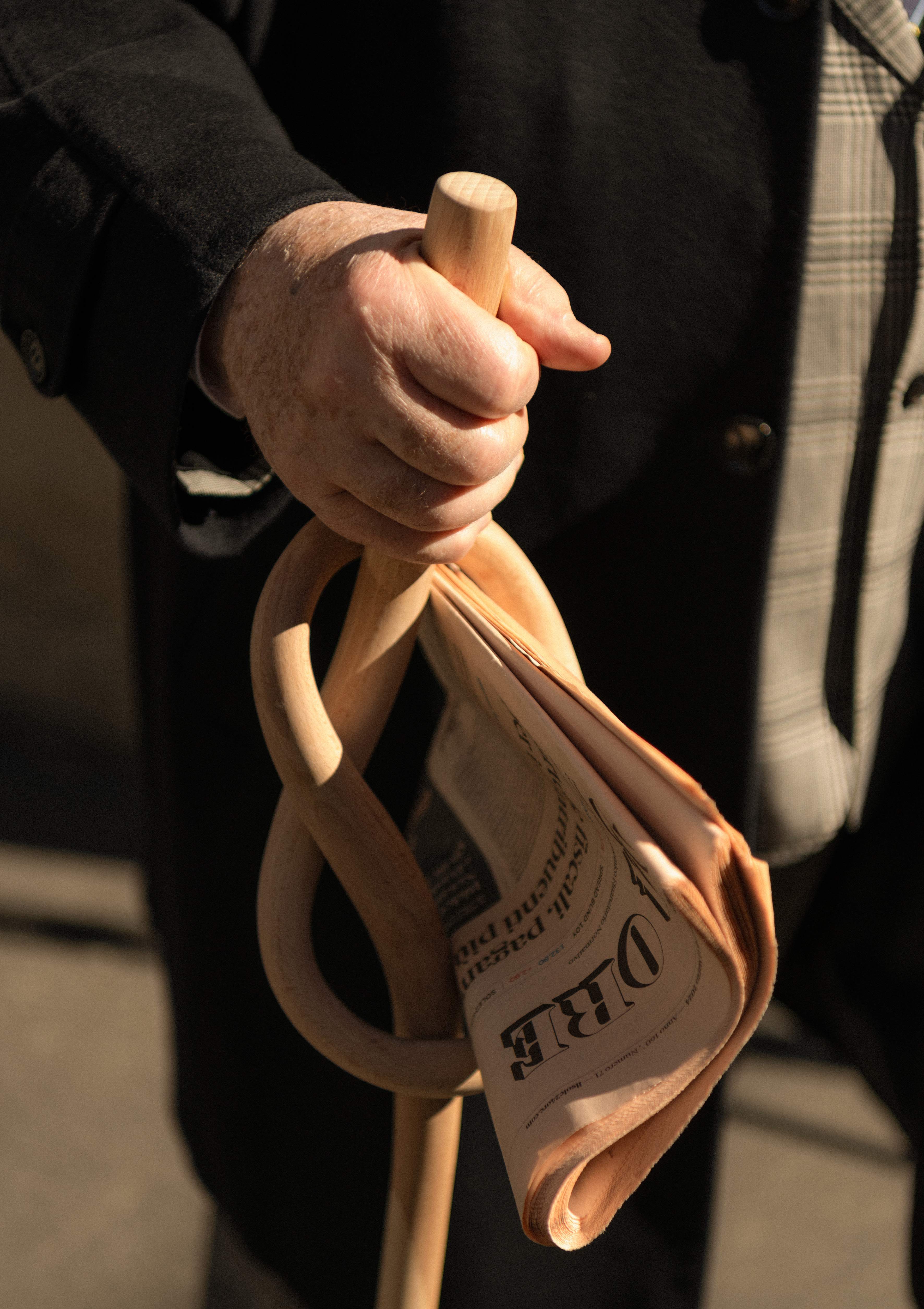
Tell us about your approach to design. What is your starting point?
My approach is organic and always adapting but there are a few core principles. I think a lot about materiality and production techniques, which change based on what the brand that I’m working with is capable of and what it needs. But my primary focus is on how people want to use a product and I consider the atmospheric effect that a piece can have on a space.
How do you ensure that your designs take into account your customers’ needs?
We continually ask ourselves how we can make things more intentional and try to figure out the exact purpose of a particular product. Take a chair, for example. When the cantilevered version without four legs was first conceived at the Bauhaus, it explored the idea of emptiness and how to reduce the feeling of clutter that chairs sometimes create. It was about the atmosphere; the technical execution came afterwards. First, you need to know what you want to achieve and make it purposeful, ideally with a little twist or sense of humour.
For this year’s Milan Design Week, you curated an exhibition showcasing walking sticks and canes designed by 18 international designers. What drew you to this subject?
I have been thinking about designing walking canes for years. There are a lot of elderly people in Japan and Italy, and I often see them struggling to get up and down steps. In both countries, they use sticks that look and feel quite medical, which I have long felt is horrible. The purpose of a walking stick is to make its user want to walk. It’s not just about physically supporting them. If it’s embarrassing to hold, people won’t want to be seen with it. So they end up not walking, getting weaker and weaker as a result. They lose muscle strength, as well as their appetite for going outside. All of this inspired me to do a show for which designers would create walking sticks and canes that people could take pride in and would be happy to use. I started to talk about the idea with some of my friends, such as Hugo Passos, Jasper Morrison and Julie Richoz, who all agreed that it would be an interesting subject to explore. That’s how they ended up designing canes for the exhibition.
What were you hoping the show would achieve?
It was a great opportunity to send out the message that designers don’t always need to change big things. We can encourage people to see things differently and push boundaries – and maybe create something amazing.
Rising talents
Established by design luminary Marva Griffin Wilshire in 1998, Salone Satellite is a section of Salone del Mobile that is dedicated to promoting the work of emerging creatives. Since its inception, it has helped to launch the careers of luminaries including Felicia Arvid, Sebastian Herkner and Nendo’s Oki Sato. Here, we pick six of our favourites from this year’s crop.
the design duo
KT&FS
Japan
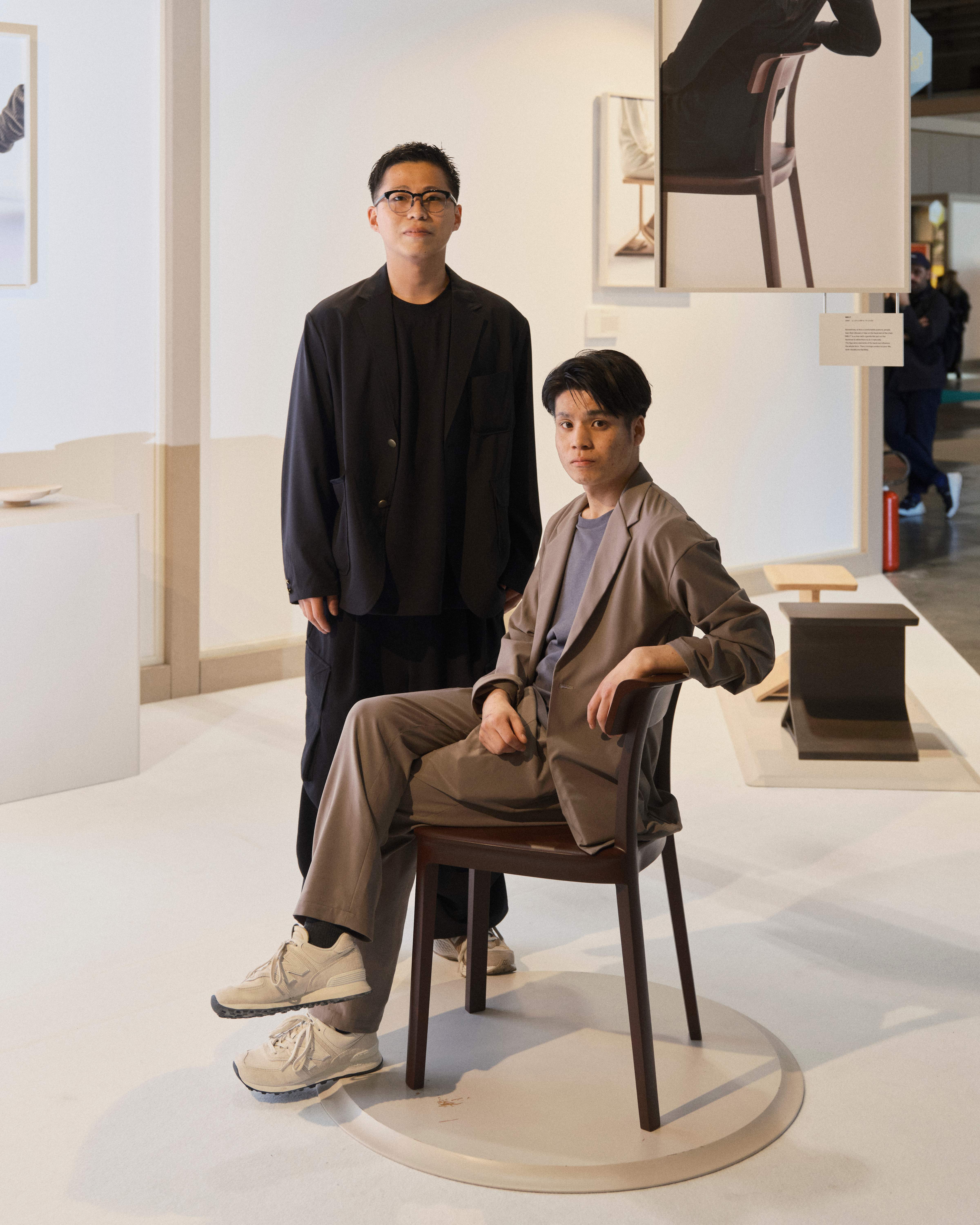
Kobe-based furniture designers Kotaro Tominaga and Futo Sakurai debuted at Salone Satellite this year with Made in Your Habits, a collection of five pieces exploring the interplay between design and everyday rituals. The line-up, featuring a dining chair, a contoured shelf, an angled footrest and more, transforms routine acts into effortlessly ergonomic experiences.
What inspired the Made in Your Habits collection?
The five furniture prototypes are based on routine acts of everyday life, such as sitting and resting. We carefully observed these habits. If the pieces ever find their way into people’s homes, we hope that they will support better habits and behaviours among those who incorporate them into their lives.
What’s your studio’s ethos?
We want to make products that are firmly rooted in reality. To achieve this, we spend a lot of time studying different cultures, customs and production methods. We also value working with our hands: we build all of our prototypes ourselves. It’s part of our philosophy to test the products personally to ensure that they’re right for the user. We like including little surprises in our work too. And we believe that comfort is important if it makes life more satisfying. A piece doesn’t have to be world-changing. There should be a charm that people notice when they use a product.
the leading light
Jos van Roosmalen
The Netherlands

An industrial designer by trade, Jos van Roosmalen runs his namesake studio from Rotterdam, where he focuses on lighting, consumer electronics and furniture. At Salone Satellite, he presented work at a collective stand titled Pathways,alongside a host of other Dutch designers. Its aim? To highlight the diversity and quality of the country’s emerging practices.
What did you show at Salone Satellite?
It was a series of lighting and furniture pieces. The highlight was the Radial Light, which was designed to have a calming, Zen-like effect. I wanted it to be mesmerising. So I passed light through an acrylic sheet, which resulted in a glow that reminds me of a solar eclipse. And I lifted this light effect off the ground using a frame similar to a painter’s easel.
How would you describe your approach to design?
I like to observe natural light effects that occur during the day, then think about how they can be translated into light fixtures. The concept of domesticating natural light in this way drives my designs. I have worked in-house for large technology companies so have been inspired by industrial design work too. It’s about a sense of refinement and finding new ways to create beautiful results within the constraints of mass-production techniques.
the playful perfectionist
Ryan Twardzik
USA
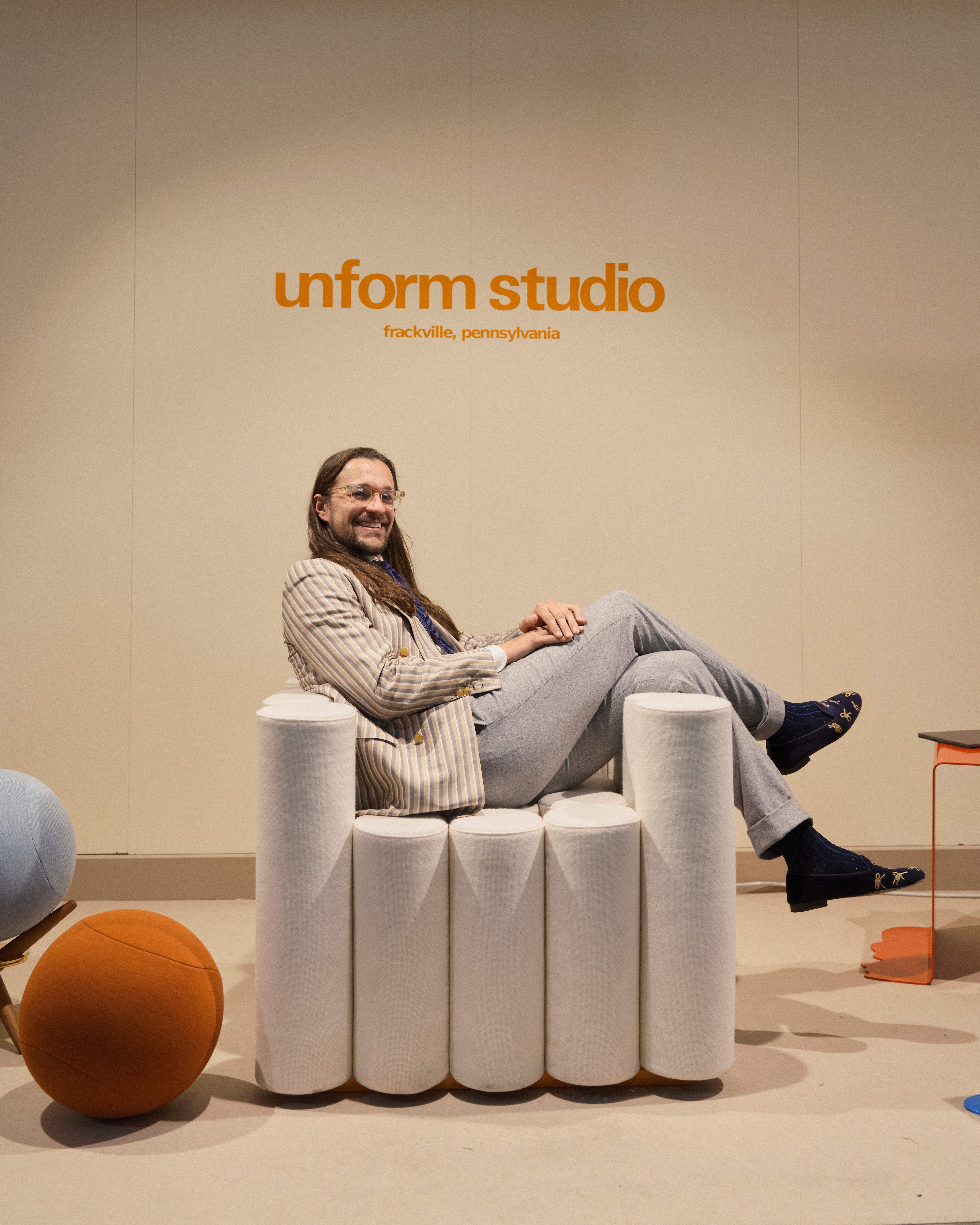
Ryan Twardzik is the founder of Pennsylvania-based design practice Unform Studio, which is known for furniture that is riotous in both colour and form. Its pieces have a sculptural sensibility but are always comfortable and built to last. Here, Twardzik tells us why a designer’s goal should be to create products that become part of the fabric of their owners’ lives.
What sets your design apart?
My work is playful but production-ready. I have an industrial design background so I’m always thinking, “How will this get made?” and “How can this be reproduced at scale?” It’s also about treating form and function with the same respect during the design process. That allows me to make work that is visually striking and pushes the boundaries of form but is still useful as furniture.
Is there a particular issue that you want to address in your work?
When I was in design school, so many of the projects being made by students had to connect to your phone or an app to be usable. But what happens when that technology becomes obsolete in a few years? A chair might go out of style but it won’t go out of use. That’s a commentary on disposable design. You can really love and live with a piece if it has a beautiful form and offers a tactile experience. You’ll keep it for a long time.
the university students
Cedim
Mexico
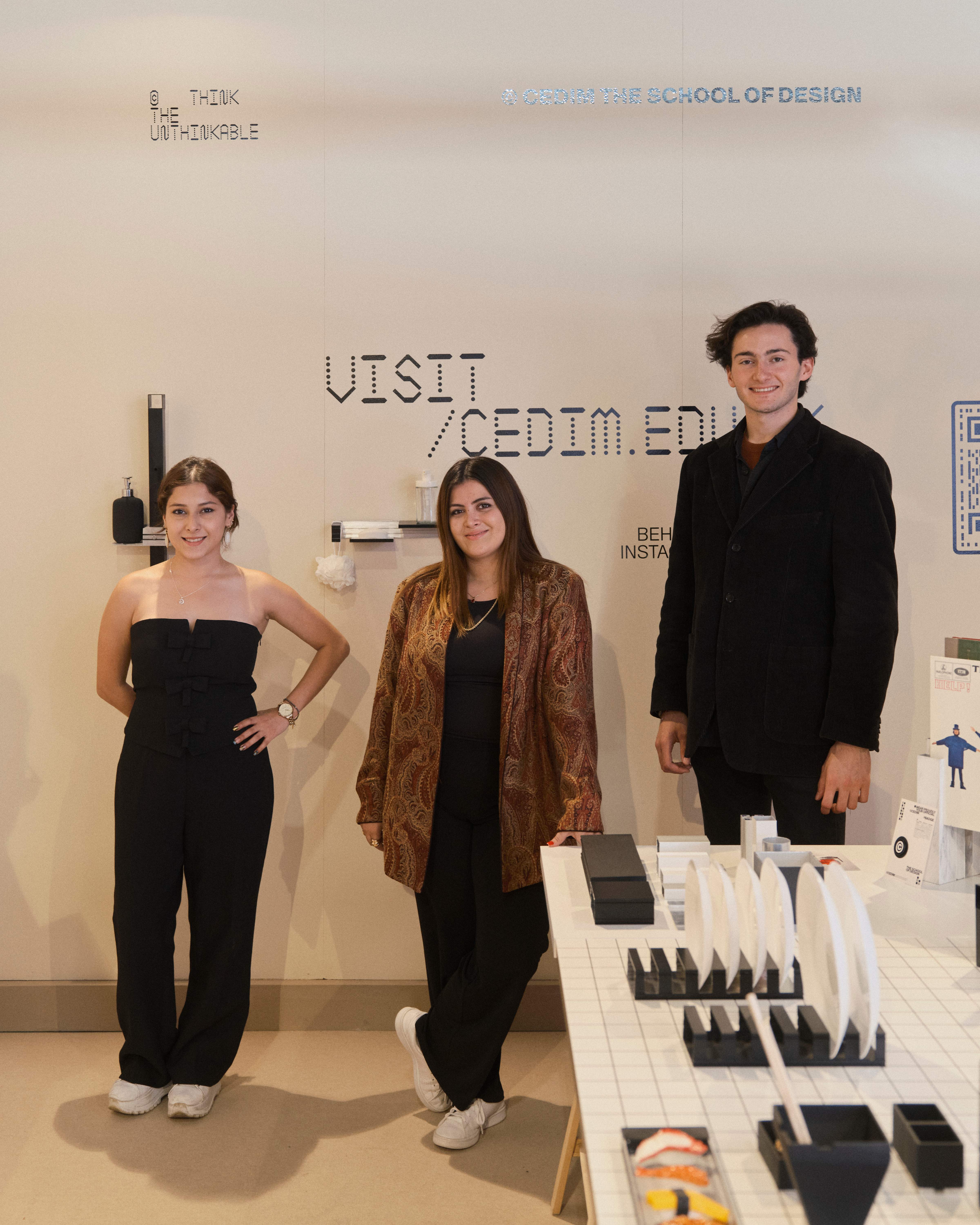
The Centro de Estudios Superiores de Diseño de Monterrey (Cedim) is a leading design and innovation university in Mexico. Its showcase at Salone Satellite, Aluminium in Harmony, presented a wide range of “Made in Mexico” homeware created by its students including Eugenia Gutierrez, Sofía Guerra and Paul Peschard (pictured). The show was organised by Miguel Zertuche, the university’s industrial design and product development co-ordinator, with Andrés Lhima acting as director.
Tell us about the showcase.
We asked our students to use aluminium to develop everyday objects that still have an industrial essence. This involved considering environmental themes and the use of materials, as well as Monterrey’s industrial and natural contexts.
How did you want people to feel when they encountered the students’ pieces?
We hoped that they would find the pieces meaningful, whether or not they were from Monterrey. We wanted the work to reflect our city’s industrial environment, landscapes and architecture. Though the pieces were created by more than 20 students, they all conveyed the essence of the project’s concept when viewed together. We wanted viewers to feel inspired by the fusion of industrial and natural elements, and to see the connection between the design of the pieces and Monterrey’s unique context.
the post-postmodernist
Edvin Klasson
Norway
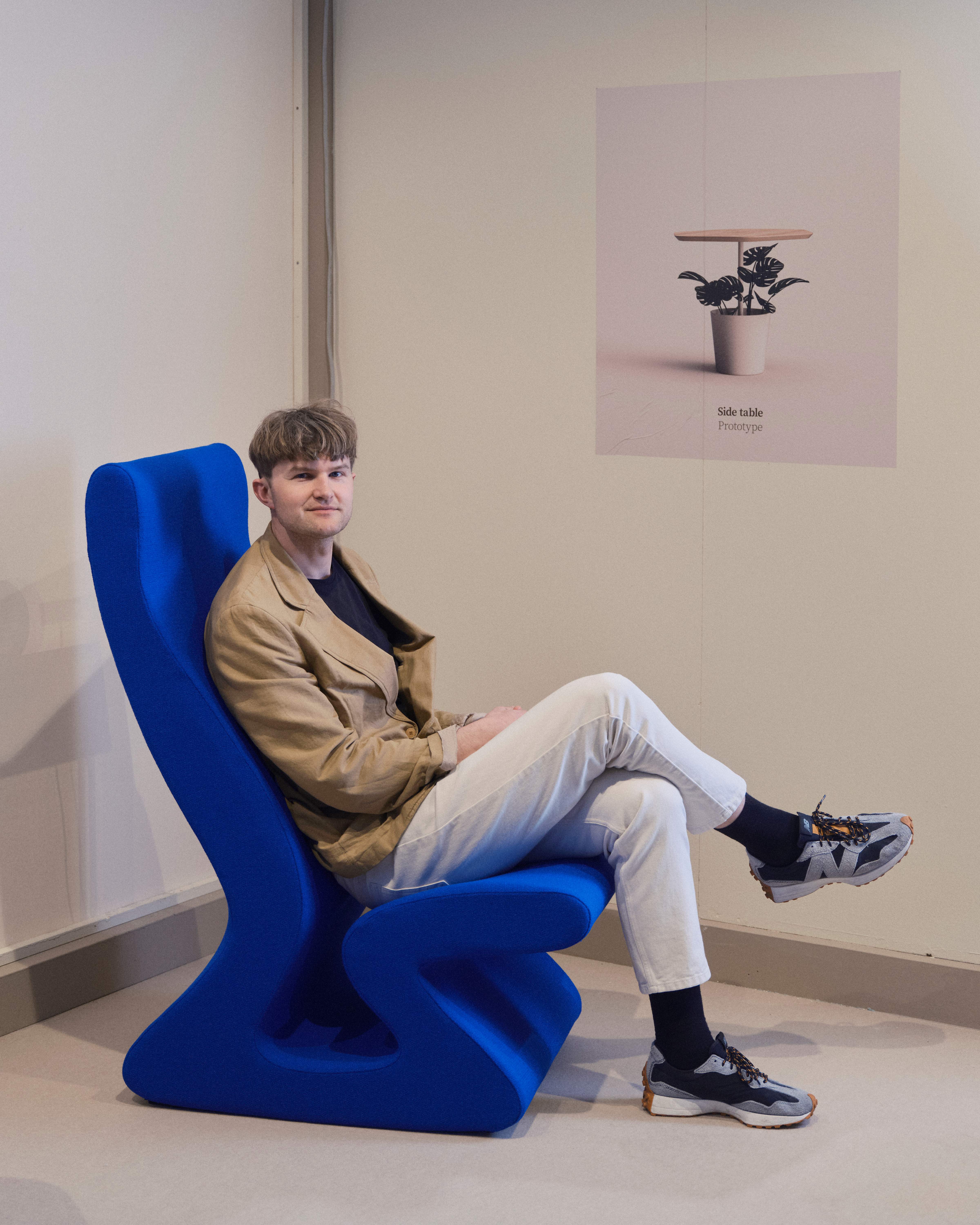
Since establishing his namesake studio in 2016, Oslo-based designer Edvin Klasson has collaborated with both industrial-scale manufacturers and small workshops. At Salone Satellite, he presented four pieces of furniture: a stackable bar stool called Tropo; lounge chair Arp (pictured); side table Passaic; and Python, a compact table lamp that doubles as a cork board.
Could you tell us a little about your approach to design?
My work explores symbolism, history and cultural heritage. It can be viewed as an extension of postmodernism. I usually play on personal or collective memories in my work. People are also often surprised by the ergonomic considerations, hidden solutions and double meanings in my designs. My goal is to create products that connect with their users on an emotional level and evoke personal associations rooted in their own experiences. It’s also important to me that they can easily be repaired or disassembled. These priorities are related, as both deal with questions of consumer behaviour and product longevity.
What are the main issues that you want to address with your work?
I’m trying to challenge the concept of Scandinavian design, specifically Norwegian design. I want the industry to move beyond the stereotypical aesthetics of its postwar heyday.
the cultural mixer
Selma Lazrak
Morocco & Germany
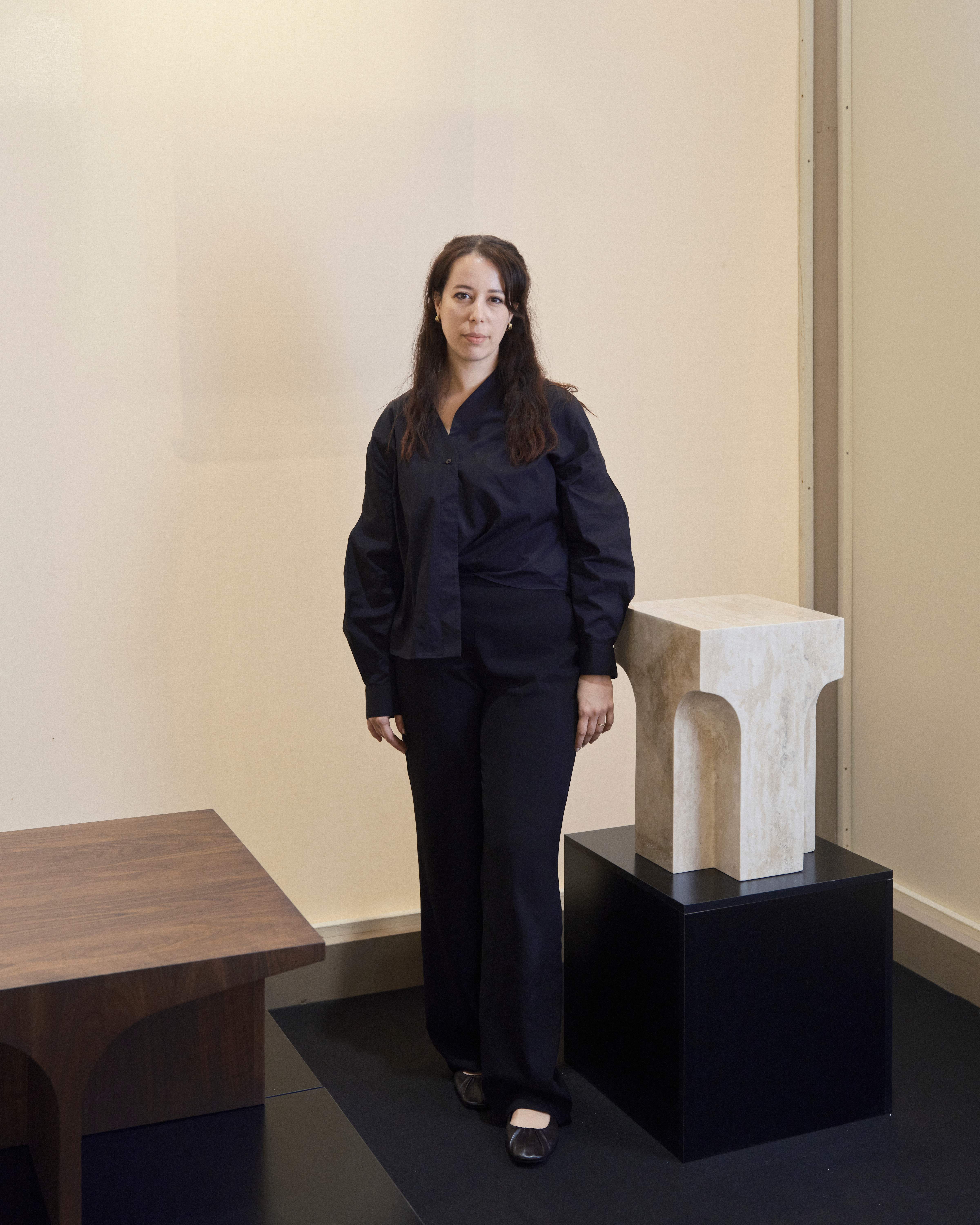
Moroccan designer Selma Lazrak is based in Munich, where she infuses her furniture and product designs with the symbols and architectural silhouettes of her home country. At this year’s Salone Satellite, she presented three sculptural pieces crafted from natural materials including walnut and travertine.
How was your experience at this year’s Salone?
Participating in the fair put me in direct contact with the public and allowed me to explore new avenues, especially in terms of working on scenography, lighting and graphics. As an architect, I found it fulfilling to have a hand in shaping the overall project.
How does your heritage influence you?
It’s a wellspring of inspiration. My current collection draws from Morocco’s rich art and architectural history. It’s also inspired by the materiality and simplicity of its Mediterranean landscapes, particularly its coastlines, mountains and deserts. The aim was to encapsulate the essence of this heritage and land in a unique form. By harmonising angles and curves, solid and empty spaces, and creating an interplay of light and shadows, I brought the intricately carved surfaces to life. The designs are also symmetrical, which heightens the sculptural effect and pays homage to the traditions of Moroccan and Andalusian art, with their arches, columns and precise geometry.


